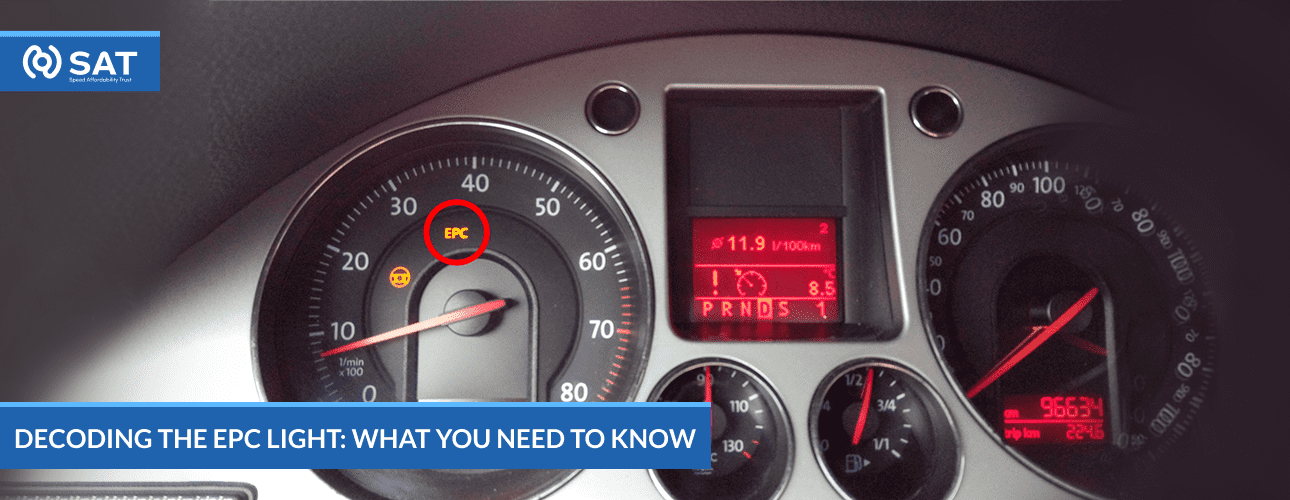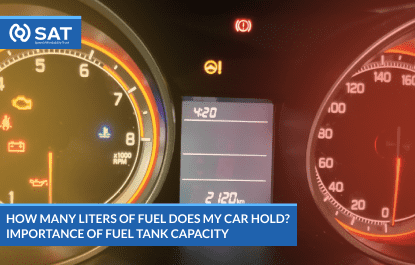
Bridgestone Vs. Michelin Tires – Who’s the Boss
Bridgestone and Michelin are the two industry giants of the tire market.

Thanks to technology, cars now have numerous sensors to monitor their various components. Manufacturers install them so owners can easily discover if something’s wrong with their vehicle. When the sensor detects something abnormal, a symbol appears on the dashboard indicating a special message. In them one is called EPC light that is mainly found on the Volkswagen Audi and Porsche cars. What thing we need to do when the light appears on the your car’s dashboard
Electronic Power Control slant, or EPC light for short, is a vehicle warning symbol. You may notice this symbol on the dashboard if a malfunction occurs in the car’s throttle system. It’s a system designed by Volkswagen to manage all functions related to the car’s throttle and ignition.
Over time, Volkswagen has updated the EPC and it is now an integral part of the vehicle’s electronic control unit (ECU). This unit is the brain of the vehicle, which enables all components in the car to work normally. By working alongside the ECU, the EPC monitors a whole range of vital systems, including electronic stability and traction control.
If any car component doesn’t work as expected, the EPC turns on a warning sign “EPC” on the dashboard. Once the EPC light turns on, you may notice several changes in your Volkswagen’s functionality. These include:
The EPC triggers these changes to protect your car’s engine from potential damage. It reduces power output, resulting in a sluggish feel, and activates a safety mode known as “limp-home” to prevent further issues.
When an EPC light turns on, you can’t diagnose the problem by yourself. The reason is that it’s connected with various electronic systems of your vehicle. The EPC light can pop up due to several issues, ranging from minor problems to failures in critical components such as the Brake Control System, Engine Control Unit, Steering Control, and Traction Control.
Often, other warning indicators also turn on once the EPC light shows up. These can sometimes give a clue of hidden issues. However, you can’t rely only on these lights. As mentioned earlier, the EPC could warn of specific or multiple problems.
If you notice the EPC light turning on when driving, here’s what you can do before getting professional help.
If your car lights and the throttle body connections are right, then you must get the vehicle checked by a professional technician as soon as possible. It’s because the longer you drive with the light on, you’re increasing the damage to its vulnerable components. Worse, vital systems like the Brake Control Unit could fail, which can cause accidents.
Even though the “limp-home” mode activates, it doesn’t mean you’re protected from additional damage.
You can manually switch off the EPC slant but it requires following instructions based on the model of your Volkswagen car. This would give a temporary solution for normal functioning. However, we strongly advise not to reset the EPC light.
The EPC slant is crucial for finding out the problems that caused it to turn on. When you turn off the EPC light, this doesn’t solve those problems. Rather, they get ignored, which can lead to bigger issues and increase repair expenses.
After sending a warning indication on the car’s dashboard, the EPC generates error codes. These are sent to the control units of your vehicle, which are:
Which control unit has the error code depends on the component or system that experienced a failure. With the help of special equipment, technicians scan each of these control units to get the error codes.
From the error codes, a technician can find out which system and component of your car had a malfunction. This makes it easier for them to repair any damaged parts. Once the repairs are done, technicians can safely reset the EPC slant, making your car brand new.
The light acts as an important warning indicator on Volkswagen vehicles, highlighting potential problems with various systems and components. Whether the problem is minor or major, consult a professional technician as soon as possible when the light is on. Get more on SAT
Yes, you can drive while the EPC light is on. However, you must get the vehicle checked at a reliable auto repair shop.
If your Volkswagen, Audi, or Porsche has low engine oil, it can trigger the EPC warning slant indicator. Along with this light, you may also see the ‘check engine’ warning light appear on the dashboard.
The EPC light can turn on if your car’s brakes aren’t working normally.

Bridgestone and Michelin are the two industry giants of the tire market.

Considering the recent developments in the world order, oil prices have increased significantly over the last decade. During such times, being well-researched about your car fuel tank and its features can be extremely useful in cost-cutting. Knowing about your car’s fuel capacity may not seem too significant at face value, but such a basic factor […]

Subaru is widely known for being a highly reliable manufacturer of vehicles that are simultaneously safe and stylish. Because of Subaru Models‘ performance and reliability, these vehicles have a loyal fanbase that swears by them. However, there are some limitations with their boxer engine, and one of the faults in some Subaru vehicles is the […]